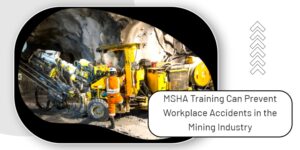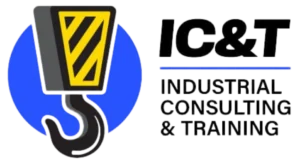
Have you ever wondered how a simple mistake in a mine can lead to a life-threatening accident? “Safety isn’t expensive, it’s priceless.” – Author Unknown.
The mining industry is one of the most dangerous workplaces, with hazards lurking at every corner. Explosions, cave-ins, equipment malfunctions, and exposure to toxic gases these risks are real. They happen faster than you can react.
However, do you understand that MSHA (Mine Safety and Health Administration) miner training can drastically reduce these dangers? Want to know how? Keep reading to discover how this training can save lives and make mining operations much safer.
Identifying Hazards Before They Become Disasters
Mining accidents rarely happen without warning. There are always signs, such as small shifts in the rock, unusual gas smells, or an overheated machine. However, without the proper training, these warning signs go unnoticed. MSHA training helps miners recognize these subtle clues before they escalate into deadly disasters.
For example, miners are trained to detect methane gas leaks that can prevent catastrophic explosions. Likewise, understanding the importance of inspecting support beams can stop a cave-in before it happens. The ability to spot danger early is the difference between a close call and a tragic accident.
Mastering the Use of Safety Equipment
Do you have any idea how many accidents occur just because safety equipment isn’t worn properly? A poorly fitted respirator, a broken helmet, or lost gloves can make minor risks into deadly wounds. MSHA training educates miners on how to wear, inspect, and maintain their safety equipment properly.
For instance, a miner who knows how to check oxygen in a closed environment will never venture into a tunnel lacking breathable oxygen. Moreover, knowledge of wearing an independent air mask can make a difference between survival and death during an accident.
Preventing Equipment-Related Accidents
Heavy equipment is necessary and a lethal danger in mining. Bulldozers, conveyors, and drill equipment are necessities, but did you realize how many accidents occur because of equipment breakdowns? Training doesn’t only make the operator skilled; it makes him realize hazards as well. MSHA courses place particular emphasis on maintaining the equipment in a correct and healthy manner, as well as correct operational practices and procedures to stop machines during emergencies.
For example, a well-trained operator will never attempt to fix a jammed conveyor belt while it’s still running, preventing a gruesome injury. Likewise, understanding how to safely exit a malfunctioning vehicle can prevent fatalities in case of rollovers.
Enhancing Emergency Preparedness
What happens when a mine collapses, a fire erupts, or an explosion occurs? Panic? Chaos? Not if miners are trained properly. Understanding the MSHA miner training equips workers with the knowledge to respond swiftly and efficiently during emergencies. Drills and simulations ensure that every miner knows exactly what to do when disaster strikes.
For instance, in the famous 2010 Chilean mine rescue, those trapped underground survived for 69 days because they followed emergency protocols. Knowing evacuation routes, first aid procedures, and how to use emergency oxygen supplies can mean survival in the most critical moments.
Promoting a Culture of Safety and Accountability
Safety is not about rules; it’s about mindset. Did you know that a mine with a good safety culture has dramatically fewer accidents? MSHA training instills responsibility and awareness at every level of a mining operation. Employees watch out for each other, managers enforce procedures, and nobody skimps on safety.
For instance, when a miner raises concerns about a possible danger, lives are saved. Promoting responsibility ensures that safety becomes second nature and that the whole work area becomes safer and accident-free.
Conclusion
Mining will never be safe, but it doesn’t have to be fatal. Understand that MSHA miner training is not only a law; it’s a lifeline. Detecting hazards ahead of time, wearing safety equipment properly, avoiding equipment accidents, being ready for emergencies, and promoting a safety-first culture can be the difference between life and death.

